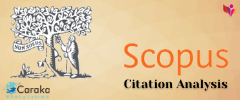Religious Songs on Youtube: The Impact on Students
Abstract
Beginning in 2018 Indonesian people are treated to religious songs from Sabyan Gambus group whose vocalist Nissa Sabyan. The songs sung by Nissa Sabyan echoed almost in every layer of the society. One of the media that made it easy for people to enjoy various songs from several Nissa Sabyan albums is YouTube. This paper was aimed to analyze the YouTube's role of students' religious dimension. The method used in this research is a survey with a qualitative approach. The survey was conducted on 147 students. The results of the study prove that YouTube as an Internet-based audio-visual media is an effective medium for spreading religious nuances. The majority of students feel to be religious by listening to Nissa Sabyan's songs, even though they don't understand the contents of the lyrics. Thus, it can be concluded that YouTube has a significant role in fostering a religious sense of students.
Keywords
Full Text:
PDFReferences
Bailey, B. A., & Davidson, J. W. (2002). Adaptive Characteristics of Group Singing: Perceptions from Members of a Choir Forhomeless Men. Musicae Scientiae, 6(2), 221-256.
Bailey, B. A., & Davidson, J. W. (2003). Amateur group singing as a therapeutic instrument. Nordic journal of music therapy, 12(1), 18-32.
Beck, R., Cesario, T., Yousefi, A., & Enamoto, H. (2000). Choral singing, performance perception, and immune system changes in salivary immunoglobulin A and cortisol. Music Perception: An Interdisciplinary Journal, 18(1), 87-106.
Clift, S. M., & Hancox, G. (2001). The perceived benefits of singing: findings from preliminary surveys of a university college choral society. The journal of the Royal Society for the Promotion of Health, 121(4), 248-256.
Haase, D. G. (2009). The YouTube makeup class. The Physics Teacher, 47(5), 272-273.
Jones, T., & Cuthrell, K. (2011). YouTube: Educational Potentials and Pitfalls. Computers in the Schools, 28(1), 75-85. doi:10.1080/07380569.2011.553149
Jung, I., & Lee, Y. (2015). YouTube acceptance by university educators and students: a cross-cultural perspective. Innovations in Education and Teaching International, 52(3), 243-253. doi:10.1080/14703297.2013.805986
Lai, K. (2013). How Are Our Undergraduates Using YouTube? A Survey on Music Students’ Use of YouTube and the Library's Multimedia Collection. Music Reference Services Quarterly, 16(4), 199-217. doi:10.1080/10588167.2013.843361
Piedmont, R. L. (1999). Does spirituality represent the sixth factor of personality? Spiritual transcendence and the five‐factor model. Journal of personality, 67(6), 985-1013.
Putman, D. (1990). The aesthetic relation of musical performer and audience. The British Journal of Aesthetics, 30(4), 361-366. doi:10.1093/bjaesthetics/30.4.361
Schwemmer, C., & Ziewiecki, S. (2018). Social Media Sellout: The Increasing Role of Product Promotion on YouTube. Social Media + Society, 4(3), 1-20. doi:10.1177/2056305118786720
Silber, L. (2005). Bars behind bars: the impact of a women's prison choir on social harmony. Music education research, 7(2), 251-271.
Singh, K., Sigroha, S., Singh, D., & Shokeen, B. (2017). Religious and spiritual messages in folk songs: a study of women from rural India. Mental Health, Religion & Culture, 20(5), 464-477.
Sousou, S. D. (1997). Effects of Melody and Lyrics on Mood and Memory. Perceptual and Motor Skills, 85(1), 31-40. doi:10.2466/pms.1997.85.1.31
Stratton, V. N., & Zalanowski, A. H. (1991). The effects of music and cognition on mood. Psychology of Music, 19(2), 121-127.
Stratton, V. N., & Zalanowski, A. H. (1994). Affective impact of music vs. lyrics. Empirical Studies of the Arts, 12(2), 173-184.
Travis, L. (2010). One of Many Free Survey Tools: Google Docs. Journal of Electronic Resources in Medical Libraries, 7(2), 105-114. doi:10.1080/15424065.2010.482902
Watanabe, H. (2005). Changing adult learning in Japan: The shift from traditional singing to karaoke. International Journal of Lifelong Education, 24(3), 257-267.
DOI: https://doi.org/10.53400/mimbar-sd.v5i3.14499
Refbacks
- There are currently no refbacks.
Copyright (c) 2018 Mimbar Sekolah Dasar

This work is licensed under a Creative Commons Attribution-ShareAlike 4.0 International License.
View Mimbar Sekolah Dasar Stats


.png)

.png)
